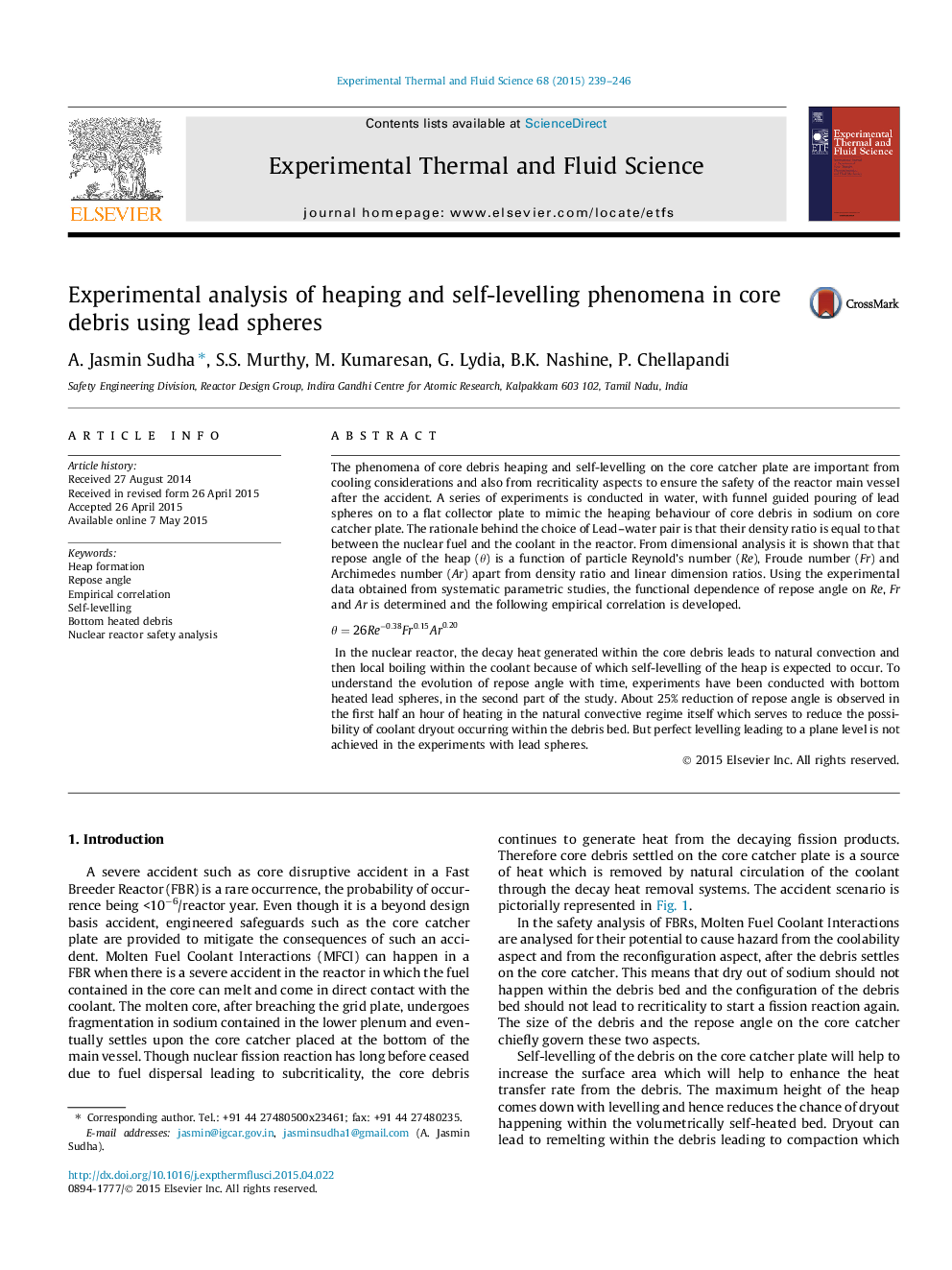| کد مقاله | کد نشریه | سال انتشار | مقاله انگلیسی | نسخه تمام متن |
|---|---|---|---|---|
| 7052168 | 1457408 | 2015 | 8 صفحه PDF | دانلود رایگان |
عنوان انگلیسی مقاله ISI
Experimental analysis of heaping and self-levelling phenomena in core debris using lead spheres
ترجمه فارسی عنوان
تجزیه و تحلیل تجربی از پشته های پشته سازی و پتانسیل خودبازسازی در باقی مانده های هسته ای با استفاده از حوزه های سرب
دانلود مقاله + سفارش ترجمه
دانلود مقاله ISI انگلیسی
رایگان برای ایرانیان
کلمات کلیدی
تشکیل چاه زاویه باز همبستگی تجربی، خود تسطیح، بقایای پایین گرمایی، تجزیه و تحلیل ایمنی راکتور هسته ای،
موضوعات مرتبط
مهندسی و علوم پایه
مهندسی شیمی
جریان سیال و فرایندهای انتقال
چکیده انگلیسی
The phenomena of core debris heaping and self-levelling on the core catcher plate are important from cooling considerations and also from recriticality aspects to ensure the safety of the reactor main vessel after the accident. A series of experiments is conducted in water, with funnel guided pouring of lead spheres on to a flat collector plate to mimic the heaping behaviour of core debris in sodium on core catcher plate. The rationale behind the choice of Lead-water pair is that their density ratio is equal to that between the nuclear fuel and the coolant in the reactor. From dimensional analysis it is shown that that repose angle of the heap (θ) is a function of particle Reynold's number (Re), Froude number (Fr) and Archimedes number (Ar) apart from density ratio and linear dimension ratios. Using the experimental data obtained from systematic parametric studies, the functional dependence of repose angle on Re, Fr and Ar is determined and the following empirical correlation is developed. θ=26Re-0.38Fr0.15Ar0.20 In the nuclear reactor, the decay heat generated within the core debris leads to natural convection and then local boiling within the coolant because of which self-levelling of the heap is expected to occur. To understand the evolution of repose angle with time, experiments have been conducted with bottom heated lead spheres, in the second part of the study. About 25% reduction of repose angle is observed in the first half an hour of heating in the natural convective regime itself which serves to reduce the possibility of coolant dryout occurring within the debris bed. But perfect levelling leading to a plane level is not achieved in the experiments with lead spheres.
ناشر
Database: Elsevier - ScienceDirect (ساینس دایرکت)
Journal: Experimental Thermal and Fluid Science - Volume 68, November 2015, Pages 239-246
Journal: Experimental Thermal and Fluid Science - Volume 68, November 2015, Pages 239-246
نویسندگان
A. Jasmin Sudha, S.S. Murthy, M. Kumaresan, G. Lydia, B.K. Nashine, P. Chellapandi,
